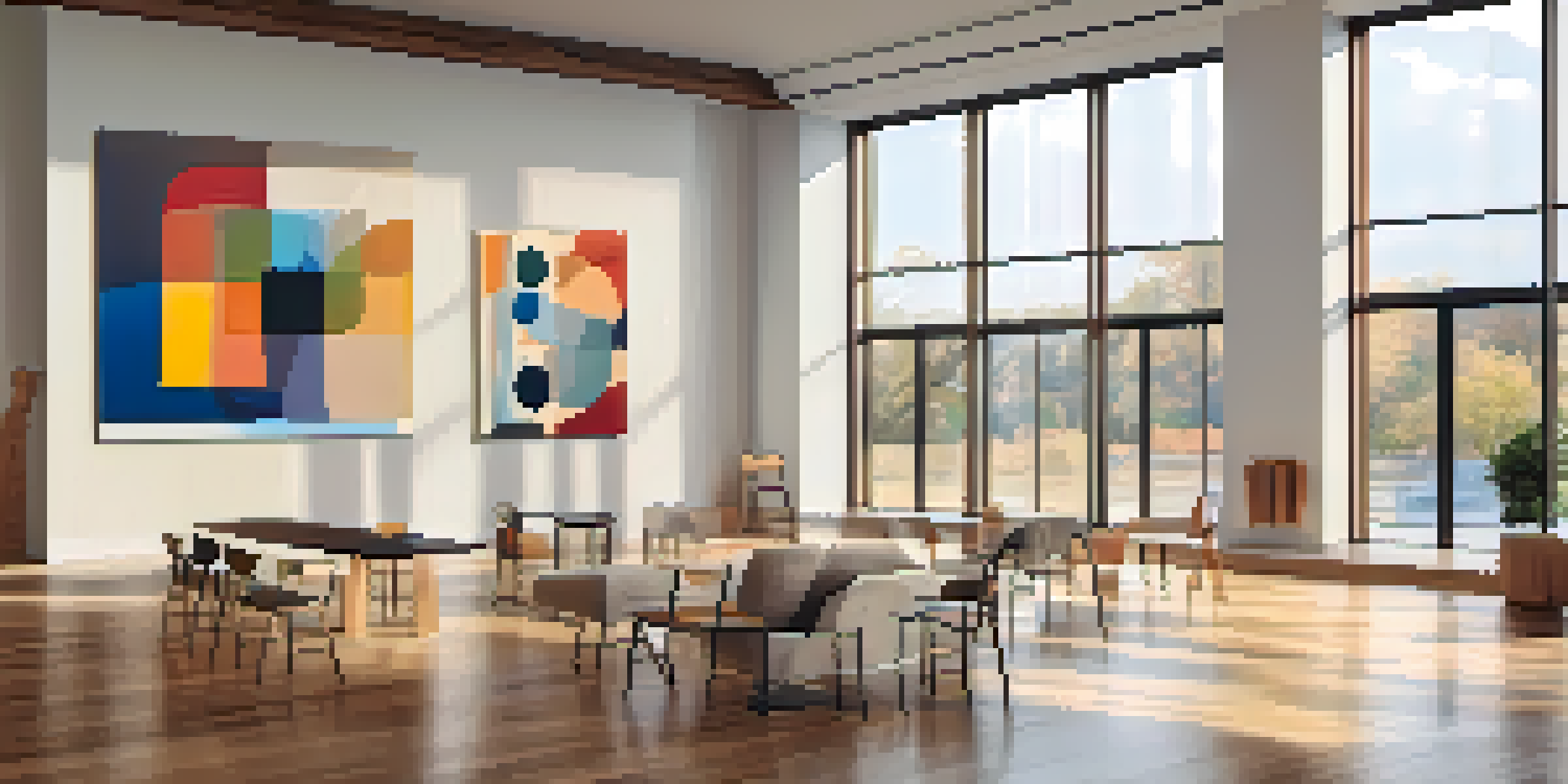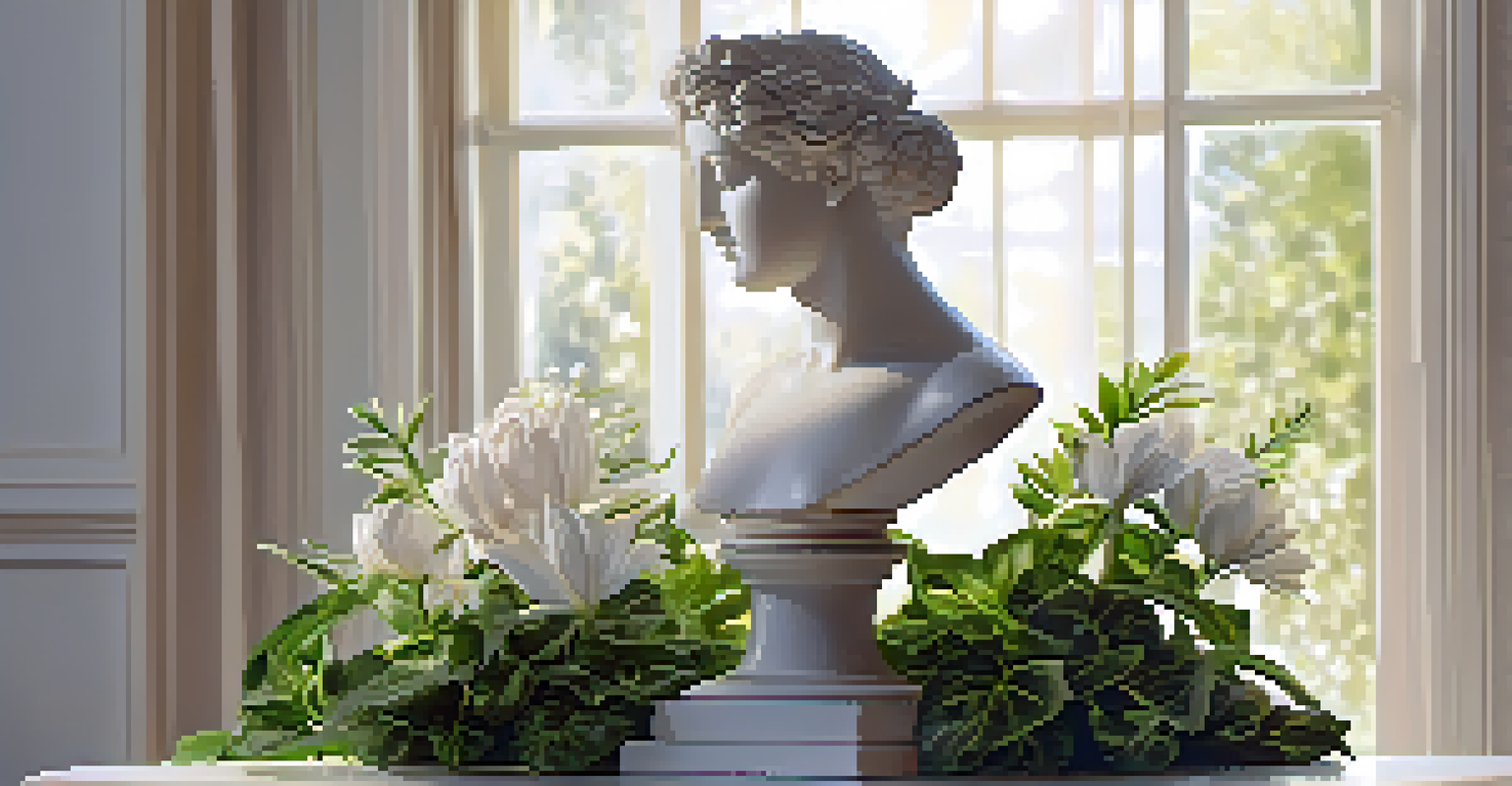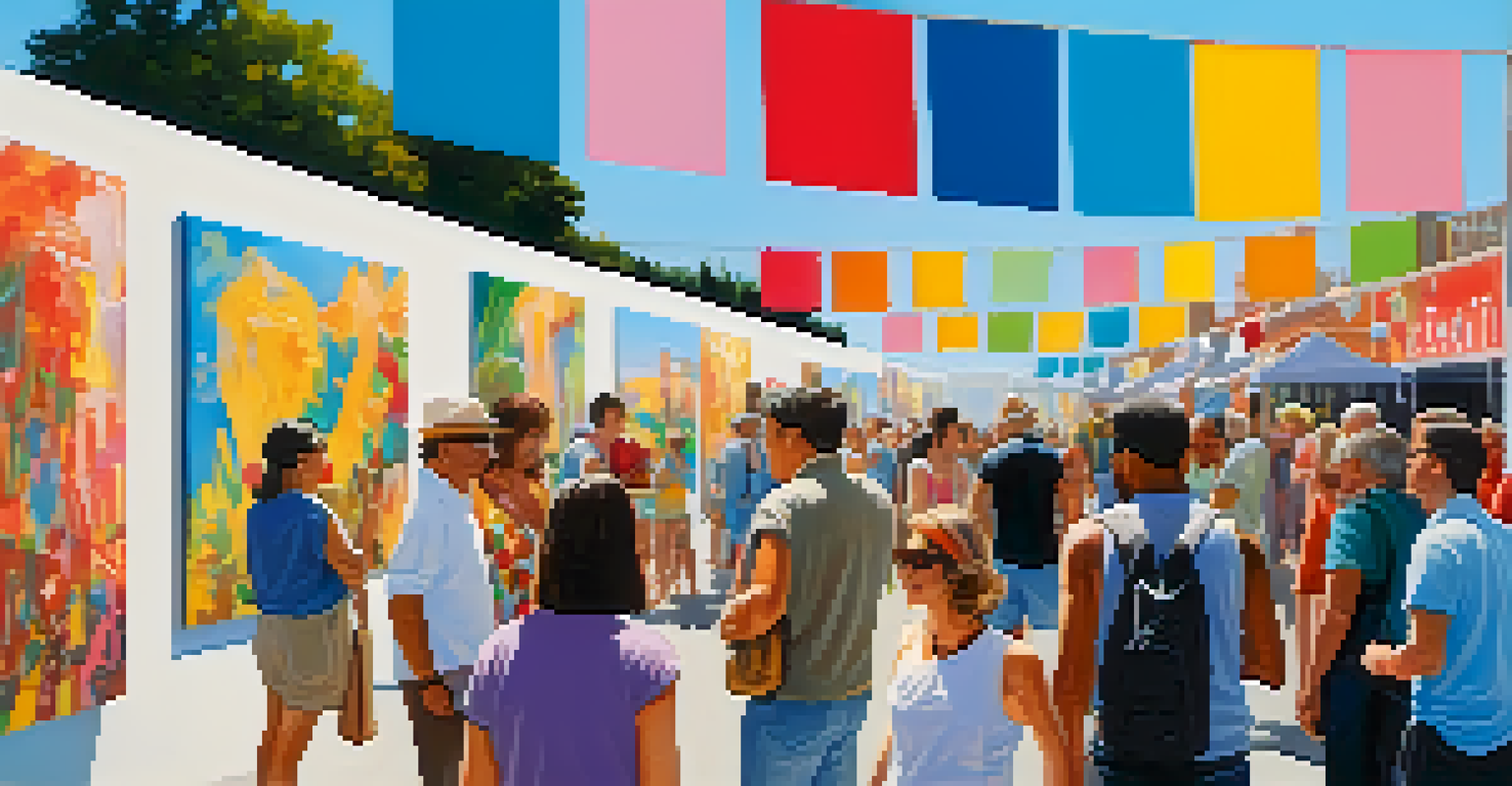The Rise of Art Funds: Investing Collectively in Fine Art

Understanding Art Funds: What Are They?
Art funds are investment vehicles that pool money from multiple investors to purchase fine art. This collective approach allows individuals to invest in expensive artworks that they might not be able to afford on their own. By collaborating, investors can diversify their portfolios and potentially benefit from the appreciation of art over time.
Art is not what you see, but what you make others see.
The concept is similar to mutual funds in the stock market, where a group of investors shares the risks and rewards of their collective investments. Each investor owns a fraction of the fund, which can include various artworks from different artists and periods. This setup not only makes art investment more accessible but also helps mitigate the risks associated with purchasing high-value pieces.
As art funds have gained traction, they’ve attracted both seasoned collectors and newcomers to the art world. This surge in interest highlights how art can be appreciated not just for its aesthetic value but also for its financial potential.
The Appeal of Art as an Investment
Investing in art has become increasingly popular as people look for alternative assets that can offer both enjoyment and potential financial returns. Unlike traditional investments, art can provide a unique blend of emotional satisfaction and monetary value, making it an appealing option for many. Moreover, art often appreciates over time, especially in a market where traditional assets can be volatile.

Many investors are attracted to the idea of owning tangible assets like paintings or sculptures, which can often be displayed and enjoyed in their homes. This dual benefit of owning art for both personal pleasure and investment purposes makes it a unique asset class. Additionally, art can act as a hedge against inflation, as its value often rises when the purchasing power of currency declines.
Art Funds Make Investing Accessible
Art funds allow multiple investors to pool resources, enabling access to high-value artworks that might otherwise be unaffordable.
Furthermore, the market has seen a growing number of art events and auctions, increasing accessibility for investors. This visibility has led to a greater understanding of art as an asset class, encouraging more people to consider it for their investment portfolios.
How Art Funds Operate: The Mechanics
Typically, art funds are managed by experienced professionals who curate a selection of artworks to purchase. These managers conduct thorough research and analysis to identify pieces that have potential for appreciation. Once artworks are acquired, the fund holds them until the right time to sell, aiming to maximize returns for its investors.
The greatest value of a picture is when it forces us to notice what we never expected to see.
Investors usually have a set timeframe during which their money will be locked in, often ranging from a few years to a decade. This structure allows the fund to take a long-term approach to art investment, which is crucial as the art market can be unpredictable in the short term. Transparency is key, and investors are typically kept informed about the fund's performance and the valuation of the artworks.
Additionally, some art funds provide investors with opportunities to engage with the artworks directly, such as attending exhibitions or private viewings. This personal connection can enhance the investment experience, making it more than just a financial transaction.
Risks Involved with Art Funds
While art funds present exciting investment opportunities, they also come with inherent risks. The art market can be notoriously unpredictable, with values fluctuating based on trends, economic conditions, and even the popularity of certain artists. Investors must be aware that not all artworks will appreciate, and some may even lose value over time.
Liquidity is another concern, as selling art can take time and finding the right buyer is not always guaranteed. Unlike stocks or bonds, which can be quickly sold on the market, art sales can be a lengthy process. This means that investors might not have immediate access to their funds when they wish to cash out.
Art as a Dual Investment
Investing in art offers both emotional satisfaction and potential financial returns, making it a unique asset class.
Moreover, due diligence is vital when selecting an art fund. Investors should thoroughly research fund managers, fees, and the historical performance of the fund to ensure they are making informed decisions. Understanding these risks can help investors navigate the art market more effectively.
The Legal Landscape of Art Funds
Investing in art funds also involves navigating a complex legal landscape. Regulations may vary by country, and it's essential for investors to be aware of the laws governing art investment and ownership. This includes understanding the fiduciary responsibilities of fund managers and the rights of investors.
Due to the high values associated with art, legal disputes can arise over ownership, authenticity, and provenance. Investors need to ensure that artworks are properly authenticated and that clear titles are established to avoid potential legal issues in the future. This diligence helps protect their investment and ensures that they are purchasing legitimate works.
Moreover, tax implications should not be overlooked. Depending on the jurisdiction, there may be tax benefits or liabilities associated with art investments. Consulting with legal and financial advisors can provide clarity and guidance in this area, ensuring that investors are fully informed before committing their funds.
The Future of Art Funds in the Investment Landscape
As interest in art as an investment continues to grow, the future of art funds looks promising. More investors are recognizing the potential of art to diversify their portfolios and provide an alternative to traditional investment avenues. This trend is likely to encourage the establishment of more funds, making it even easier for individuals to participate in the art market.
Furthermore, advancements in technology are playing a significant role in shaping the future of art funds. Online platforms are emerging that allow for fractional ownership of artworks, enabling even smaller investors to participate. This democratization of art investment could lead to a broader range of people engaging with the art market.
Navigating Risks and Regulations
Investors in art funds must be aware of market unpredictability and legal considerations, ensuring thorough research before committing.
In summary, as more individuals and institutions explore the potential of art funds, we can expect the art market to evolve. This evolution could lead to increased transparency, better access to information, and ultimately, a more robust art investment landscape.
Conclusion: Embracing Collective Investment in Art
The rise of art funds represents a significant shift in how people view and invest in fine art. By pooling resources, investors can access a world of creativity and potential financial returns that were previously reserved for the elite. This collective approach not only democratizes art investment but also fosters a greater appreciation for the value of art.
As the market continues to evolve, it’s essential for investors to stay informed and seek out reputable funds that align with their investment goals. Being part of an art fund can be a fulfilling experience, allowing individuals to connect with a community of like-minded investors who share a passion for art.

In conclusion, the trend of art funds is not just about financial investment; it’s about cultivating a deeper relationship with art and recognizing its place within the broader investment landscape. Embracing this trend could open new doors for both seasoned collectors and newcomers alike.